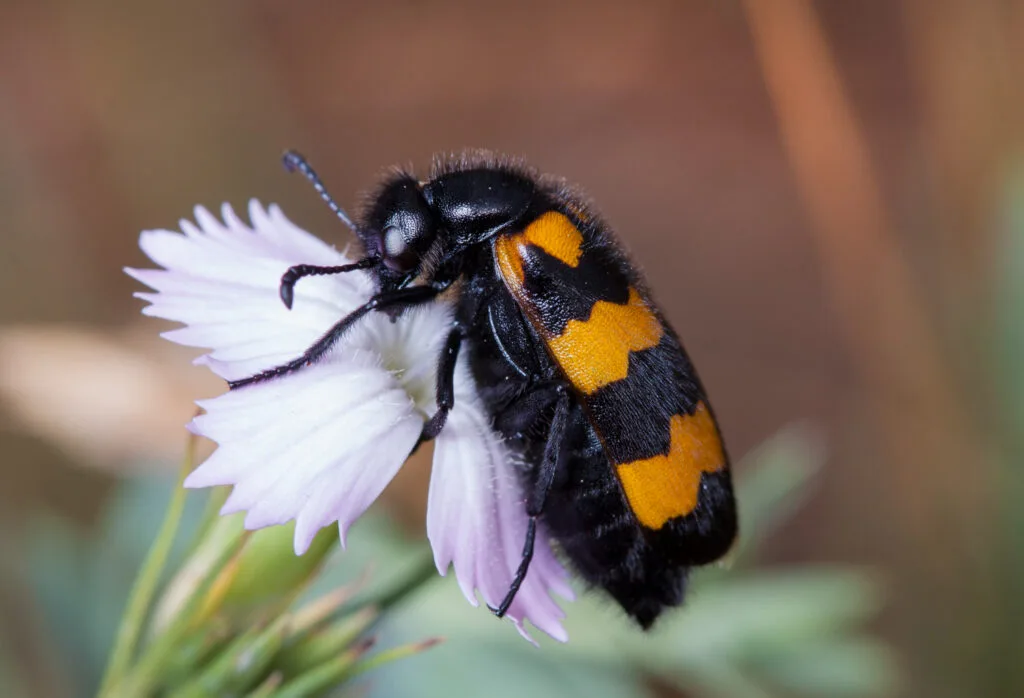Introduction
Schrenck’s Bumble Bee (Bombus schrencki) are a group of more than 250 species of large, fuzzy bees that people often recognize by their loud buzz and striped bodies. They live in many parts of the world, but they’re most common in cooler, temperate regions. You won’t usually find them in most of Africa or the lowlands of India. To help with farming and flower pollination, they’ve even been introduced to Australia and New Zealand.
For many years, scientists divided bumblebees into two groups: the nest-builders (Bombus) and the cuckoo bumblebees (Psithyrus), which take over the nests of other bumblebees instead of building their own. But in the early 21st century, researchers reclassified them, and now Psithyrus is treated as a subgroup within Bombus.
Key Specifications of Schrenck’s Bumble Bee (Bombus schrencki)
| Specification | Details |
| Scientific Name | Bombus schrencki |
| Common Name | Bumble Bee |
| Family | Apidae |
| Size | Queen: 20–24 mm; Worker: 11–16 mm; Male: 13–18 mm |
| Appearance | Distinct black-and-white zebra-like bands on the abdomen |
| Habitat | Northern Asia, Siberia, Far East Russia, parts of Japan and Korea |
| Diet | Nectar and pollen from alpine and meadow flowers |
| Lifespan | Colony active for 3–4 months; queens overwinter |
| Nesting | Underground burrows, abandoned rodent holes, grassy slopes |
| Behaviour | Social, cold-hardy, long-distance foragers |
| Conservation Status | Not globally threatened but vulnerable to climate and habitat change |
Habitat & Behavior
The Schrenck’s Bumble Bee (Bombus schrencki) is well adapted to cold, mountainous environments. It inhabits open meadows, forest edges, and tundra-like areas from Siberia to northern Japan and the Korean Peninsula. Colonies nest in underground burrows or sheltered grassy slopes where temperatures remain stable.
Highly social, the Schrenck’s Bumble Bee (Bombus schrencki) forms annual colonies headed by a single queen. Workers forage widely, pollinating diverse alpine and woodland plants, which sustains plant diversity in these harsh regions.
Diet & Pollination Role
Feeding on nectar and pollen, the Schrenck’s Bumble Bee (Bombus schrencki) is a critical pollinator for northern wildflowers, berry shrubs, and certain vegetables. Its robust flight muscles and long proboscis allow it to forage in cool weather and reach deep tubular flowers, ensuring successful fertilisation.
Life Cycle
The Schrenck’s Bumble Bee (Bombus schrencki) follows a typical bumblebee annual cycle. In late spring, queens emerge from hibernation and establish nests. Workers soon hatch to collect food and care for larvae. By late summer, new queens and males are produced, and only the fertilised queens survive winter to begin the next generation.
Conservation & Climate Concerns
Although not currently endangered, the Schrenck’s Bumble Bee (Bombus schrencki) faces threats from climate warming and habitat loss. Rising temperatures push suitable alpine plants higher, shrinking foraging ranges. Conservationists recommend:
- Protecting mountain meadows and forest edges.
- Maintaining floral diversity through native plantings.
- Reducing pesticide use to safeguard pollinators like the Schrenck’s Bumble Bee (Bombus schrencki).
FAQs
Q1. Where is the Schrenck’s Bumble Bee found?
The Schrenck’s Bumble Bee (Bombus schrencki) inhabits northern Asia, including Siberia, Russia’s Far East, northern Japan, and Korea.
Q2. Why is it called a Schrenck’s Bumble Bee (Bombus schrencki)?
Its abdomen displays striking black-and-white stripes, resembling zebra markings.
Q3. How does Schrenck’s Bumble Bee (Bombus schrencki) survive cold climates?
The Bombus schrencki has dense fur and strong flight muscles that generate heat, enabling activity in chilly alpine conditions.
Q4. What plants does Schrenck’s Bumble Bee (Bombus schrencki) pollinate?
It pollinates alpine wildflowers, berry plants, and cold-hardy vegetables, supporting both natural ecosystems and regional agriculture.
Q5. Is Schrenck’s Bumble Bee (Bombus schrencki) aggressive?
Like most bumblebees, the Schrenck’s Bumble Bee (Bombus schrencki) is gentle and stings only when its nest is threatened.







